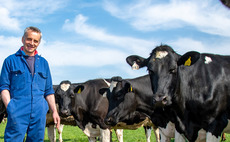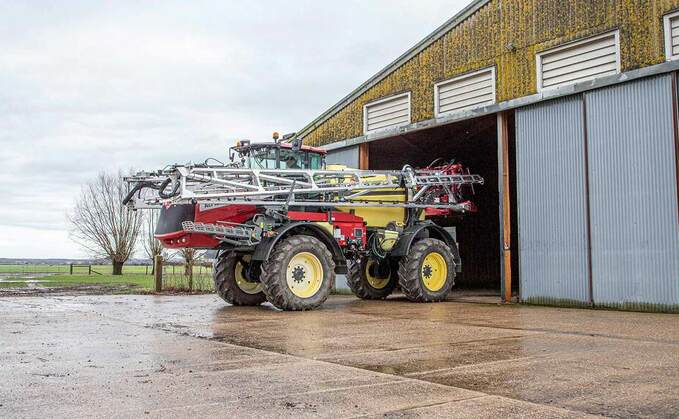
Looking for more efficiency, one Kent grower has replaced his Hardi Alpha self-propelled sprayer with the Danish maker's latest Evo II version, complete with a bigger tank. Geoff Ashcroft reports.
Logistics and infrastructure are aspects of efficiency that are frequently reviewed by Kent grower Clive Wreathall of JP Wreathall. "There is no point making a big change at the top of your machinery fleet, then failing to respond to the ripples that cascade down through all supporting kit," he says. "You have got to look at the big picture, so that the farm continues to run like a well-oiled machine regardless of the changes you make."
Clive and his brother Andrew farm 1,200 hectares on Romney Marsh, with a rotation that includes winter wheat, winter and spring barley, oilseed rape and peas. But with land on two units located about seven miles apart, the emphasis is on minimising downtime and maximising productivity.
It also explains why the business has pushed the envelope further, when it comes to crop protection. By increasing tank capacity from 4,000 to 5,000 litres, Clive Wreathall is focussed on increasing water rates, rather than spreading the tank-load over more hectares. "We are guilty of gradually shifting away from the basics," he says. "And rather than chase headline output, we now need to look at what we are already doing and adopt ways to do it better."
When it comes to spraying, the farm has been using 140 litre/hectare water volumes, but in a step back towards more traditional farming practices, Mr Wreathall, who is FACTS and BASIS qualified and carries out all the spraying, now believes getting back up to 200 litres/hectare will contribute to tackling blackgrass.
"I am looking to cut my forward speed by a couple of clicks, so I can sit at 10kph," he says. "With a low speed, a wide boom and using 110-degree flat fan nozzles, we will do the best we can to reduce turbulence and drift, so we can make much better contact with the target.
"Over the years, we have unwittingly moved away from traditional practices and well-proven methods in favour of output and growth," says Mr Wreathall. "It is an aspect that has certainly let black grass get a foot-hold across the farm - and we need to work to eradicate it.
"My father used to live by the mantra ‘well sown, half grown' but in recent times, it seems we have accidentally turned our backs on what worked, by thinking we can do a better job by throwing on seed and adopting bigger kit to be used by fewer people."
And the recent shift in weather patterns has put drainage at the top of the agenda. "We have just started re-draining ground that was done in the 1970s, and those fields with new schemes installed are now the best on the farm," he says. "Drainage, along with lime, P and K, higher water volumes and making better seedbeds, are all areas that need greater attention if we are to improve what we do and find better yields."
Soils across the farm are grade II, ranging from heavy silt to sandy silt. Topography is flat and field sizes range from 10-122ha - ideal conditions perhaps, for a wide boom and a big tank. "We have been at 40m for the past 12 years," he says. "Prior to that we ran on 36m tramlines with our very first Hardi Alpha."
At the time, the farm added a pair of 2m sections to each boom tip, then swapped to a dedicated 40m boom when a replacement Alpha arrived in 2012. After eight years and 6,000 hours, Mr Wreathall has remained with the Danish maker for his latest sprayer purchase.
Support comes from a 10,000-litre bowser, offering two fills for the new sprayer and the higher rates will see 25ha covered with every fill. "We have moved away from buying technology that does not have a benefit," he says. "I have no desire for individual nozzle control, but instead have a boom with 10, 4m sections driven by auto-section control and RTK-guided steering.
"The wider you go, the more demanding it is to judge when to switch on and off," he says. "And this is perhaps the best investment anyone can make in technology. It provides a consistent result."
A similar ethos is adopted with fertiliser spreading, which sees the farm's twin-disc spreader mounted on a trailed bogie. This delivers a consistent disc height to suit the wide spread width and allows a lightweight, lower powered tractor to be used.
His previous experience with Hardi Alpha sprayers has helped to refine the decision-making process with his latest purchase. Motorised fill valves have been ditched in favour of mechanical valves; there are two fill points with one by-passing the induction hopper allowing the bowser to push water direct to the tank; and three banks of centralised grease nipples have been installed to reduce boom and chassis maintenance times. "I do not want to spend hours on daily maintenance," he says. "But I am not convinced about auto-lube systems - if one blocks, you will not know until there is a failure."
Getting to the engine on the new model requires the bonnet to be raised manually using a hydraulic pump which is much more accessible than the previous model. He also has particular praise for the spacious, clutter-free cab, but has mixed feelings about the inclusion of an accelerator pedal for road use. "When you have become used to driving with a joystick, a foot pedal is not necessary," he adds. "It also takes up more floor space."
Extra pedal aside, he is pleased that the cab remains largely clutter-free. "I am not a fan of a cab full of control boxes," says Mr Wreathall. "And the Alpha does not disappoint. In addition to the main AgLeader touch-screen terminal, there is a small screen on the armrest that shows engine data.
"Perhaps the biggest disappointment is cab access. Because of the boom folding alongside the cab, the door does not open very far. It is a squeeze for a big chap like me but seeing as this is our third Hardi Alpha, it is not a stumbling block. Sprayer simplicity and reliability is much more important to me."
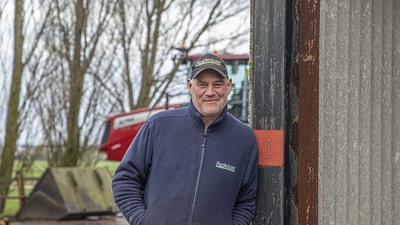
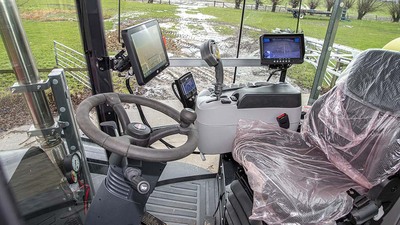
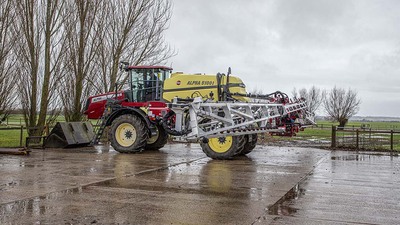
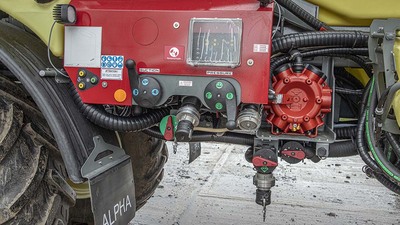
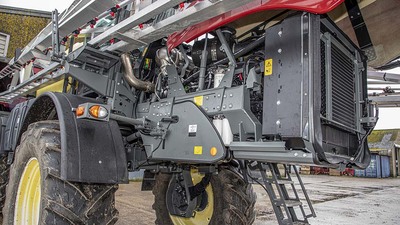
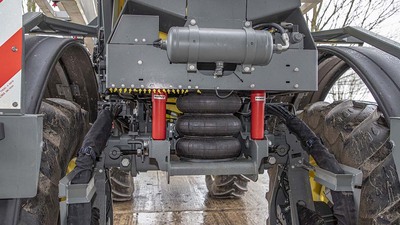
Verdict
"I will be the first to accept it is not a looker, but it is a very simple and well-built machine that meets the farm's requirements," says Mr Wreathall. "And in our experience, all our Alphas have been very reliable. I have never lost a day's spraying with an Alpha.
"Maintenance access is also really good," he adds. "Filters are easy to reach from ground level and the cooling pack is very accessible for cleaning. The improvements on this latest model are subtle, not radical.
"I do like the central cab location - you can see the front wheels, which makes spotting the machine on tramlines very easy," he says. "The sprayer has good weight distribution and in a nod to simpler times, it also uses a dry sight gauge on the tank and a mechanical indicator for boom height position. So any minor electrical failure will not stop me from spraying."

















